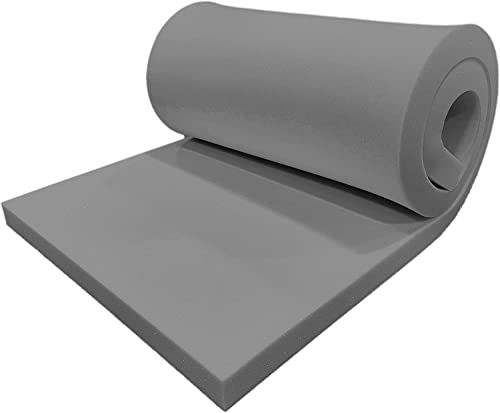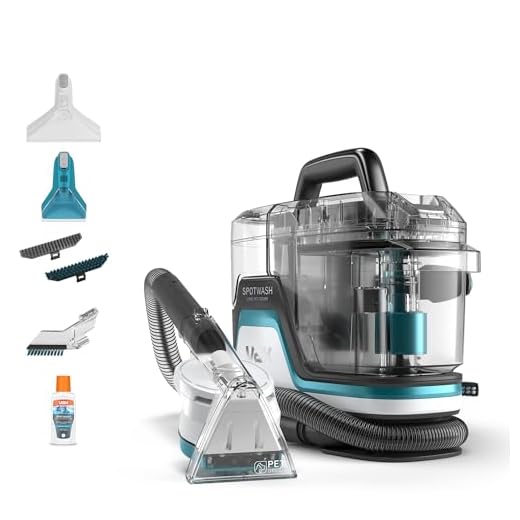








Choosing a sofa that withstands the antics of our furry companions is essential. From my experience, opting for durable materials like leather or tightly woven fabrics can significantly enhance longevity. These materials resist scratches and are easier to clean, making them ideal for households with pets.
Regular maintenance is critical. I’ve found that vacuuming upholstery frequently helps prevent hair buildup and dirt accumulation. Additionally, investing in slipcovers can provide an extra layer of protection, allowing for easy removal and washing.
Consider your dog’s behaviour too. If your canine is prone to jumping or chewing, selecting a sturdier frame will help. Sofas made from hardwood are more resilient than those with particleboard. In my case, I’ve noticed that reinforced seams have held up well against my pup’s enthusiasm during playtime.
Lastly, be mindful of your dog’s grooming. Regularly trimming nails and brushing fur can minimise damage to your furniture. After all, a little proactive care goes a long way in preserving your beloved seating arrangement.
Duration of Upholstered Furniture in the Presence of Canines
A well-maintained sofa can serve you for about 5 to 10 years, but adding a furry friend changes the dynamics significantly. Here are some tips to prolong the lifespan of your seating arrangement:
- Material Selection: Opt for durable fabrics like microfibre or leather that resist scratches and stains.
- Protective Covers: Use slipcovers or throws to safeguard the upholstery from fur and dirt.
- Regular Cleaning: Vacuum weekly to remove hair and debris, and consider professional cleaning every year.
- Design Choices: Choose darker colours or patterns that can camouflage stains better than light shades.
- Training: Encourage your pet to use designated areas or beds instead of jumping on the furniture.
From my experience, taking these steps can significantly enhance the durability of your furniture. When I first adopted my dog, I thought my lovely light-coloured sofa would be a lost cause. However, investing in a good quality slipcover and sticking to a cleaning routine made a world of difference.
Keep in mind, a few scratches or stains are inevitable. Embrace the quirks that come with having a pet, but with proper care, your furniture can remain functional and attractive for years to come.
Understanding Couch Materials and Durability
For pet owners, picking the right fabric is key. Leather is often touted for its resistance to stains and ease of cleaning, making it a favourite among those with furry companions. However, it can scratch easily, so consider a distressed or treated version for added durability.
Fabric Choices
Microfiber stands out as a fantastic option. Its tightly woven fibres repel stains and moisture, making it a practical choice for homes with energetic pets. Plus, the soft texture is comfortable for both humans and animals alike. Another worthy contender is canvas; it’s tough and can withstand rough play, but it may require more frequent cleaning.
Construction Quality
Consider the build of the furniture. Solid wood frames provide better stability and longevity compared to particleboard. Reinforced corners and high-density foam cushions also enhance durability, ensuring that the piece withstands the test of time. Opting for high-quality craftsmanship can save money in the long run, as repairs or replacements become less frequent.
Investing in protective measures like slipcovers or pet-friendly sprays can significantly extend the life of your furniture. Regular maintenance, such as vacuuming and spot cleaning, further supports the longevity of your investment. Being proactive in caring for your furniture will make a noticeable difference over time.
Factors Affecting Couch Lifespan with Pets
Regular maintenance is crucial. Vacuuming upholstery weekly can prevent fur and dander buildup, which can wear down fibres over time. Spot cleaning spills immediately can also prevent stains that lead to irreversible damage.
The size and breed of your pet play significant roles. Larger breeds tend to exert more pressure on furniture, leading to faster wear. Additionally, pets that like to jump or scratch can cause visible damage, making it essential to choose sturdy materials that resist punctures and tears.
Behavioural Aspects
Understanding your pet’s habits can help mitigate damage. If your furry friend enjoys lounging on the sofa, consider investing in protective covers. Training your dog to stay off the furniture when not invited can prolong the lifespan of your seating.
Material Choices
When selecting a new piece, consider durable fabrics like leather or microfibre. These materials are easier to clean and resist stains better than traditional upholstery. Additionally, look for reinforced seams for added strength against your pet’s playful antics.
Choosing Pet-Friendly Fabrics for Your Couch
Opt for tightly woven materials like microfiber or canvas. These options resist stains and are less likely to trap pet hair. I remember when I got my first pup; I chose a plush fabric that seemed comfy but quickly regretted it after countless clean-ups. Microfiber, on the other hand, has been a lifesaver in keeping my furniture looking fresh.
Stain Resistance and Cleanability
Look for fabrics treated with stain repellents. Brands often offer protective coatings that make it easier to wipe off spills. My current couch is coated, and I can’t tell you how many times that has saved me from panic after a muddy paw had an adventure on the sofa. Another tip: choose colours that camouflage stains. Darker shades or patterns can help disguise minor mishaps.
Durability Against Scratches
For those furry friends who love to scratch, consider leather or synthetic options. They provide a sturdy surface that withstands clawing and is easy to clean. I used to have a fabric couch, and my dog turned it into her personal scratching post. Switching to leather has made a remarkable difference; a quick wipe, and it looks brand new again.
Pay attention to the weave. Fabrics with a tighter weave resist fraying and wear better. Avoid loose weaves like chenille that can snag easily. After all, a couch isn’t just a piece of furniture; it’s a shared space for cuddles, naps, and playtime. Investing in the right material pays off, making it a comfortable spot for both you and your furry companion.
Maintaining Your Couch to Extend Its Life
Regular cleaning is key. Vacuum your furniture weekly to remove hair and dirt. Use a soft brush attachment to avoid damaging the fabric. For deep cleaning, check the manufacturer’s guidelines and use a suitable upholstery cleaner. I once tried a homemade vinegar solution, but it left a lingering smell. Stick to products designed for your specific material.
Protective Measures
Invest in a durable slipcover. This not only provides a barrier against dirt but can also be easily washed. I found a machine-washable option that has saved my sofa numerous times from muddy paws. Additionally, consider using pet-friendly throws or blankets to cover high-traffic areas.
Regular Inspections
Inspect your seating for any signs of wear. Pay attention to seams and cushions. Repairing small damages early can prevent larger issues later. I often patch up minor tears before they become problematic, saving time and money. Rotating cushions can also help maintain their shape and comfort.
| Maintenance Task | Frequency |
|---|---|
| Vacuuming | Weekly |
| Deep Cleaning | Every 3-6 Months |
| Cushion Rotation | Monthly |
| Slipcover Washing | As Needed |
Lastly, train your furry friend to stay off the furniture or use designated areas for them. Establishing boundaries can significantly reduce wear and tear. It’s a challenge, but the payoff is a longer-lasting, cleaner piece of furniture.
Signs Your Couch Needs Replacement
When the fabric starts to fray or the cushions lose their shape, it’s time to consider a new seating option. Look out for holes or stains that simply won’t come out, as these can be both unsightly and a breeding ground for bacteria. If your furry friend has managed to dig up the foam or stuffing, that’s another clear indication that a replacement is due.
Uncomfortable Seating
If you find yourself sinking into the frame or feeling springs poking through, it could signal that the internal structure is compromised. This discomfort not only impacts relaxation but may also lead to back issues over time. A once-cozy spot can become a place of frustration instead of comfort.
Persistent Odours
Another red flag is if unpleasant smells linger despite cleaning efforts. Even the best efforts with pet-friendly sprays may not mask the scents that have seeped deep into the fabric. If the aroma doesn’t fade, it’s a sure sign that the material has absorbed too much over time.
Best Practices for Protecting Your Sofa from Pets
Investing in protective measures is crucial for maintaining your upholstery. Here are specific strategies I’ve found helpful:
- Use a Pet Cover: A washable pet cover can save your furniture from fur and scratches. Choose one that fits snugly and complements your home décor.
- Designate a Pet Area: Train your furry friend to use a specific spot for lounging. This helps limit their access to the entire living space.
- Regular Grooming: Keeping your pet well-groomed reduces shedding. Brushing them frequently can significantly decrease the amount of hair on your seating.
- Trim Nails: Regular nail trimming prevents scratches on your upholstery. Consider using nail caps for additional protection.
- Opt for Stain-Resistant Fabrics: Choose materials that repel stains and are easy to clean, like microfibre or leather. They withstand wear and tear better than other options.
- Train Commands: Implement commands such as “off” or “no” to guide your pet away from the furniture. Consistency is key for successful training.
- Use Furniture Spray: Some pet-safe sprays deter pets from jumping onto the sofa. Just ensure they are safe for your animal before applying.
- Invest in a Quality Vacuum: A powerful vacuum designed for pet hair can keep your furniture clean and hair-free, making maintenance much easier.
For pet owners, nutritional choices can also impact behaviour. Incorporating best fibre to add to dog food can promote better digestion, reducing discomfort that may lead to restlessness or destructive behaviour.
Implementing these practices can greatly enhance the longevity of your furniture while keeping your home looking stylish and welcoming.









